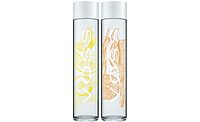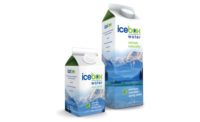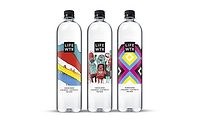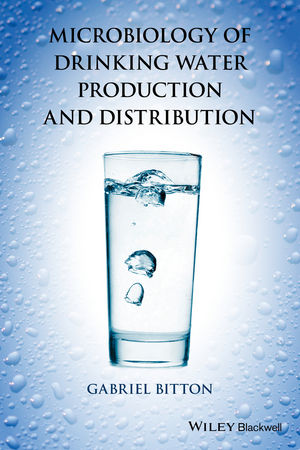The focus on our natural resources and how we make the most of them is greater than ever. Water is mankind’s No. 1 resource. As population levels continue to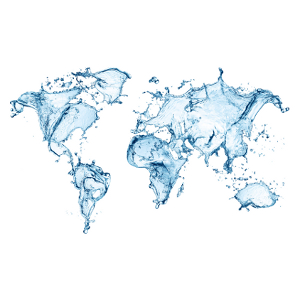 increase and more people are living in cities than ever before, access to affordable water has taken on an even greater significance. With the global consumption of water continuing to grow substantially, so too does the market for bottled water. This is illustrated by a 28 percent increase in sales from 2007 to 2012. During that period, water accounted for 37 percent of the total global soft drinks market, amassing volume sales of 229 billion liters, whereas carbonated soft drinks totalled 36 percent, and juices, nectars, other soft drinks, isotonics and teas made up 27 percent. Within the bottled water market itself, still water dominated the sales charts, accounting for 86 percent of the total, with sparkling or carbonated water accounting for only 14 percent.
increase and more people are living in cities than ever before, access to affordable water has taken on an even greater significance. With the global consumption of water continuing to grow substantially, so too does the market for bottled water. This is illustrated by a 28 percent increase in sales from 2007 to 2012. During that period, water accounted for 37 percent of the total global soft drinks market, amassing volume sales of 229 billion liters, whereas carbonated soft drinks totalled 36 percent, and juices, nectars, other soft drinks, isotonics and teas made up 27 percent. Within the bottled water market itself, still water dominated the sales charts, accounting for 86 percent of the total, with sparkling or carbonated water accounting for only 14 percent.
Of course, there are several different types of naturally occurring potable water. Well water, spring water, mineral water, purified water and distilled water all are quite different, which has a lot to do with the location of the water’s source and the processes that the water goes through before it reaches the point where it is collected prior to being sold to consumers. Well water, for example, usually is trapped and stored between layers of permeable rocks and soil. It is similar to spring water in the sense that both are produced from natural aquifers located around rock beds and soil, but spring water emerges naturally at the ground surface. Mineral water can come from either a well or a spring but must contain a specified amount of certain trace minerals, such as calcium and magnesium. Purified water is produced by any process through which contaminants and minerals have been mechanically filtered or processed. The term is used loosely sometimes to describe water that has been treated to neutralize— but not necessarily to remove — contaminants that are harmful to humans or animals. Distilled water is one version of purified water produced by distillation, a process by which water is boiled until it is converted to vapor and then condensed, leaving solid contaminants behind.Whatever the type of water, producers’ needs in terms of bottling and hygiene remain the same. Polyethylene terephthalate (PET), which was used to contain 85 percent of all bottled water sold in 2012, now is the packaging material of choice in this growing market.
A highly competitive and changing market
The bottled water market is, of course, highly competitive. It is a volume-driven sector, although, even in today’s more global environment, the world market remains fragmented. Between them, a limited number of key global players produce a multitude of brands. Some are internationally recognizable — some are even available worldwide — but most are available only regionally. In 2011, the leading 10 brands accounted for 18 percent of the total volume sold. Presently, it appears that sales of bottled water in Western Europe and North America have reached a plateau, whereas in developing countries like Latin America, the Middle East and the Asia-Pacific region, the market for bottled water continues to grow significantly. This is especially true of China and India. In 2012, the Asia-Pacific region outperformed Western Europe as the leading consumer of bottled water for the second year running.
Consumers have become increasingly conscious of health issues in recent years, and their habits are changing as a result. Today, we are seeing a reaffirmation of the consumption of water for its intrinsic thirst-quenching qualities and natural attributes. For this reason, manufacturers are looking to maximize the benefits of naturally occurring waters, sometimes adding ingredients to further enhance their rehydration properties. Approximately five years ago, a trend emerged in the bottling of flavoredwaters, but it ultimately failed to grow significantly because it had only limited appeal to consumers. Also, around the world, personal and general social mobility is on the increase. This has led to changes in the packaging of drinks and the resulting growth in demand for smaller on-the-go bottles that are easy to handle and carry.
In the current beverage industry, investment decisions often are taken later in the marketing process, which usually results in the urgent need to get any new product to market quickly. Ultimately, this invariably leads to the necessity of a quick ramp-up of the production line. This truncated process coupled with the need to provide sustainable operation equipment effectiveness (OEE) are the main challenges that producers and bottlers are facing in the water market today. Employing solutions providers with experienced technicians in many different countries in many different parts of the world, often in close proximity to customers, can help to achieve efficient installation and start-up of bottling lines. Supported by simple operation, such as format changeovers, cleaning and maintenance, as well as standardized settings and pre-defined procedures, both expected and unexpected downtime can be minimized.
Efficiency is the key in minimizing total cost of ownership
With early consideration during management of the project, all the different elements of standardized solutions can be anticipated, including the layout of equipment, the operational process and any necessary training. This will sustain the efficiency reached during the quick ramp-up in the longer term, and the early transfer of skills to the customer’s operators will allow them to manage the production line autonomously after the handover. Overall assessment of the line’s performance — especially with regard to customer targets — also is a key consideration. In this area, options such as Sidel’s Efficiency Improvement Tool (EIT) can identify the location of any inefficiency within the line and the work needed to get production back to maximum output. EIT can be implemented on any existing line, regardless of its original integrator or manufacturer.
The single-serve market today generally requires highly efficient output at maximum speed. In such markets, speed typically is a key driver for the reduction of total cost of ownership, and production rates usually range between 40,000 and 80,000 bottles an hour. In the United States, for example, 85 percent of the market for bottled water in PET is in 20-ounce formats produced on dedicated high-speed lines. Conversely, there also is a strong demand for flexible lines capable of producing multiple formats at lower speeds. In these instances, production rates usually range from 20,000 to 60,000 bottles an hour, which is the optimal range for reducing overall unit cost.
Preserving the integrity of bottled water
As might be expected, food safety in terms of hygiene for packaging solutions naturally remains a key issue for beverage producers, and water is no exception. There simply is no margin for compromise. Whenever minerals are extracted or added, water becomes more susceptible to micro-organisms, which in turn increase the risk of possible contamination. In the United States, ozone can be used within the production process to overcome this issue. This approach also will be adopted in Japan soon, but has not yet been authorized in Europe.
Achieving the optimum bottle weight
The drive for lightweighting, extra lightweighting and even ultra lightweighting of PET bottles has recently brought about big reductions in the environmental impact and the cost of the packaging process. Today’s producers now are striving for the lightest possible bottle with the best mechanical performance. In fact, many already are applying this strategy in all of their production facilities and are close to achieving the optimum acceptable weight for their various brands. However, the limits of lightweighting have not yet been reached. In the next three years, the weight of a 1.5-liter PET bottle, for instance, is expected to fall below 20 grams.
The drive to take lightweighting even further must not compromise on performance, appearance or the feel of the finished bottle. Of significant benefit in this respect are solutions providers who have a comprehensive overview of all industrial processes involved in PET liquid packaging including blowing, filling, labelling, secondary packaging and logistics. For example, Sidel recently helped a major water producer in North America move from a bottle weighing 14.5 grams to one weighing 9.1 grams. This represents a 35 percent reduction in weight and has resulted in savings of about 70,000 tons of resin a year. With some 20 billion of these bottles produced each year, this equates to approximately $139 million in annual savings. This is a good example of partnering with a packaging expert and an original equipment manufacturer (OEM) like Sidel early in the process andbenefiting from a deep understanding of the packaging, the product, the technology and their mutual interdependency.
Sustainability and cost efficiency
Besides lightweighting, other sustainability and cost-efficiency factors are available. One is the need for optimal global packaging solutions. In order to maximize margins, producers need to keep overheads to a minimum. Packaging generally comprises approximately 70 percent of these production costs; distribution and logistics comprise 20 percent; and actual filling comprises only 10 percent. By minimizing the weight of the bottles, the consumption of raw material will be kept low. To reduce the overall carbon emissions produced throughout the life of the finished bottle, bottlers are increasingly beginning to use recycled PET or BioPET resin wherever it is readily available. Many also are reducing the secondary packaging that accompanies the product — such as shrink-wrapping and over-wrapping — or eliminating it altogether. Maximizing the efficient use of resources, such as electricity, water and chemicals, and reducing the use of materials also is key. Ovens that can reduceelectrical consumption by up to 45 percent also are available. Labellers can contribute to both sustainability and cost savings by reducing film thickness, leveraging eco-responsible materials, avoiding the use of glue and solvents, and using lightweight bottles. Some liquid packaging solutions now replace bottle rinsing with dry decontamination of PET preforms using chemicals such as hydrogen peroxide in response to economic and environmental concerns about excessive use of water.
Water bottling lines of the future
Thirty years ago, bottling lines were composed of traditional, stand-alone equipment connected by air conveyor systems. In 1997, the market moved to an integrated Combi blow-fill-cap solution and was looking to improve hygiene standards. Steps in the future will focus on solutions to ensure better configurability, versatility and compactness while adapting to specific individual needs. Reliable and efficient, these lines of the future will be thoroughly hygienic and, in the opinion of Sidel, 100 percent dry-operation driven. They will be compact and simpler to operate to minimize intervention. They also will be operated remotely, using embedded intelligence to communicate with people or other machines. Key advances already are being made in this area, with new systems offering embedded machine intelligence, and increasing self-monitoring and process automation. This continuous and automatic process regulation improves quality control.
Meeting the challenges of a growing market
The market for bottled water continues to grow and evolve. Producers of bottled water need to recognize and react to current and emerging trends in modifying existing production lines, adding new lines, or building entirely new plants in established or new markets. The rapidly growing population has greater access to bottled water in general. In many countries, bottled water in PET is a source of safe drinking water in which hygienic packaging and the preservation of natural minerals are the prime concerns. For other countries, the convenience of ergonomic, single-serve, on-the-go consumption and the taste sophistication of carbonation, for example, are more significant market drivers.
Creative packaging solutions will continue to be a focus in what is a highly competitive market as consumers look for bottle shapes that differentiate what often is perceived as a standard commodity on supermarket shelves. In production terms, ongoing developments in lightweighting, reducing the use of raw materials, and optimizing water and energy consumption and the use of chemicals all remain important factors, as does the potential for increasing use of recycled PET and reducing the need for secondary packaging.
Water is an essential resource for everyone. Finding innovative, cost effective and environmentally sustainable ways to ensure the continued supply of bottled water will therefore remain a significant feature of the global soft drinks market.
Statistics sources: Sidel, Euromonitor International and Zenith International.

